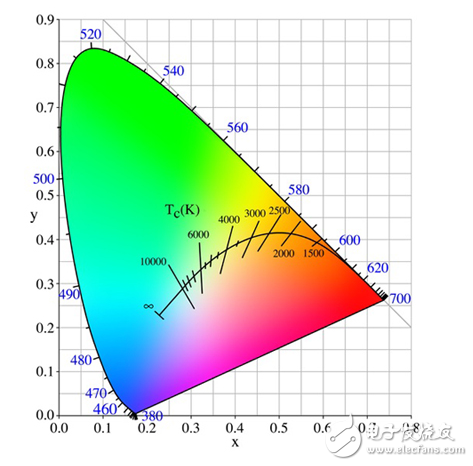
资料下载

颜色混合提供一致的LED照明便宜的路线
颜色混合提供一致的LED照明便宜的路线
生产商努力生产具有一致色温(CCT)和发光输出的LED,但有些变化是不可避免的,消费者不会注意到这一点。如果单个设备的光被夹具的内部光学元件充分混合,那么在构成单个灯具的LED中,CCT中的一些变化是不成问题的。然而,对于一个大的内部空间和外部照明灯具采用几个彼此接近,颜色和亮度变化明显变得烦人。
一种解决方案是灯具制造商购买已由制造商分类成匹配的CCT和发光输出组或“垃圾箱”的白光LED。
另一种方法是使用两个或多个垃圾箱的LED来产生预期的结果。这有一个优势,生产一个具有一致颜色的灯具,比从一个单独的箱子购买LED便宜。
这篇文章解释了CCT对于LED照明的重要性,以及如何通过选择离散的垃圾箱来实现这一点。然后,它描述了如何通过混合不同颜色的LED从几个箱子(“颜色混合”)来实现相同的结果。

A question of consistency
There are several ways to produce white LEDs, but the most common commercial method is to combine an yttrium aluminum garnet (YAG) phosphor with a royal blue LED. Most of the photons emitted from the LED are absorbed by the phosphor, in a phenomenon known as Stokes Shifting, and are re-emitted at a different wavelength, primarily in the yellow part of the spectrum. The combination of blue photons escaping directly from the LED, and the yellow emissions from the phosphor, produce a good approximation of white light (see TechZone article “Whiter, Brighter LEDs”)。
Clever manipulation of the phosphor chemistry enables LED makers to produce devices with varying CCT that lie along the Planckian black-body locus, which lies in the white zone of the CIE xy 1931 chromaticity diagram (Figure 1)。 The x and y coordinates determine a point on the color space of the diagram of a specific chromaticity.
声明:本文内容及配图由入驻作者撰写或者入驻合作网站授权转载。文章观点仅代表作者本人,不代表电子发烧友网立场。文章及其配图仅供工程师学习之用,如有内容侵权或者其他违规问题,请联系本站处理。 举报投诉
- 相关下载
- 相关文章






